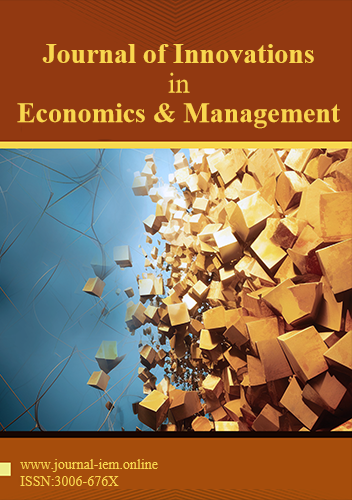 An open access journal
An open access journal
Economic Impacts of Artificial Intelligence: Productivity, Labor Market Dynamics, and Policy Implications
Abstract
This paper investigates the multifaceted economic impacts of artificial intelligence (AI) with a primary focus on productivity, labor market dynamics, and policy implications. The proliferation of AI technologies has ushered in a new era of automation and intelligence augmentation, reshaping various aspects of the global economy.
The research begins by elucidating the significance of AI as a transformative technology. It underscores how AI systems, including machine learning, natural language processing, and robotics, have the potential to revolutionize industries, enhance productivity, and create new economic opportunities.
One central theme of the study is the examination of AI's influence on productivity. It explores how AI-powered automation and decision-support systems can streamline operations, reduce inefficiencies, and boost overall productivity in diverse sectors, ranging from manufacturing to healthcare.
Furthermore, the study delves into the labor market dynamics in the AI era. It analyzes the impact of automation on employment, job displacement, and the need for reskilling and upskilling of the workforce. It also explores the emergence of new AI-related job roles and the potential for AI to augment human capabilities.
A significant aspect of the research is the discussion of policy implications. It addresses the role of governments and institutions in shaping AI adoption, regulation, and ethical use. It explores policy considerations related to data privacy, AI ethics, and the promotion of AI research and development.
Through an analysis of case studies and industry trends, the paper identifies successful models of AI implementation, highlighting best practices and lessons learned. It also emphasizes the importance of ethical AI deployment to mitigate societal challenges.
In conclusion, this paper contends that AI's economic impacts are far-reaching, with the potential to enhance productivity and reshape the labor market. It underscores the need for proactive policy frameworks that balance AI innovation with ethical considerations and labor market stability.
Share and Cite
Article Metrics
References
- Brynjolfsson, E., & McAfee, A. (2014). The second machine age: Work, progress, and prosperity in a time of brilliant technologies. W. W. Norton & Company.
- Chui, M., Manyika, J., & Miremadi, M. (2016). Where machines could replace humans—and where they can’t (yet). McKinsey Quarterly.
- Bessen, J. E. (2019). AI and Jobs: The Role of Demand. NBER Working Paper No. 24235.
- Arntz, M., Gregory, T., & Zierahn, U. (2016). The Risk of Automation for Jobs in OECD Countries: A Comparative Analysis. OECD Social, Employment and Migration Working Papers, No. 189.
- World Economic Forum (WEF). (2018). The Future of Jobs Report 2018. WEF.
- Autor, D. H. (2015). Why are there still so many jobs? The history and future of workplace automation. Journal of Economic Perspectives, 29(3), 3-30.
- Manyika, J., Chui, M., & Brown, B. (2016). Where machines could replace humans—and where they can’t (yet). McKinsey & Company.
- Brynjolfsson, E., & McAfee, A. (2017). The business of artificial intelligence. Harvard Business Review, 95(1), 90-97.
- Bessen, J. E. (2019). AI and Jobs: The Impact of Artificial Intelligence on Labor Market Outcomes. NBER Working Paper No. 24235.
- World Economic Forum (WEF). (2020). The Future of Jobs Report 2020. WEF.

